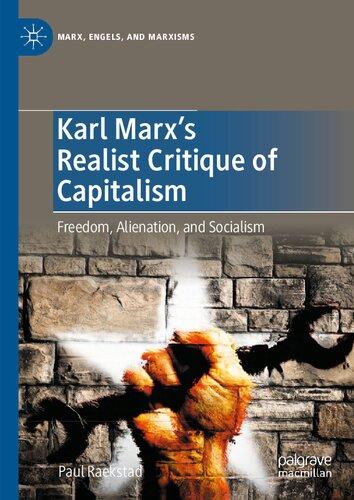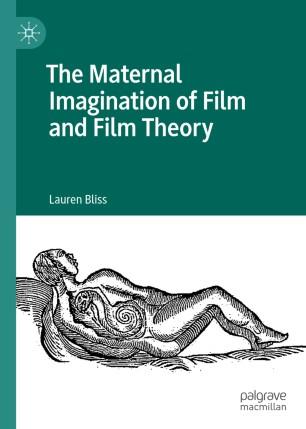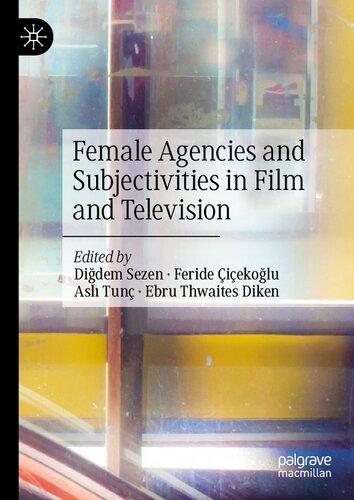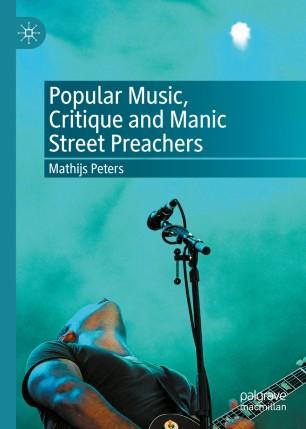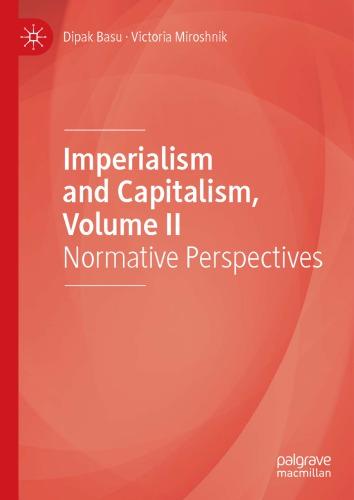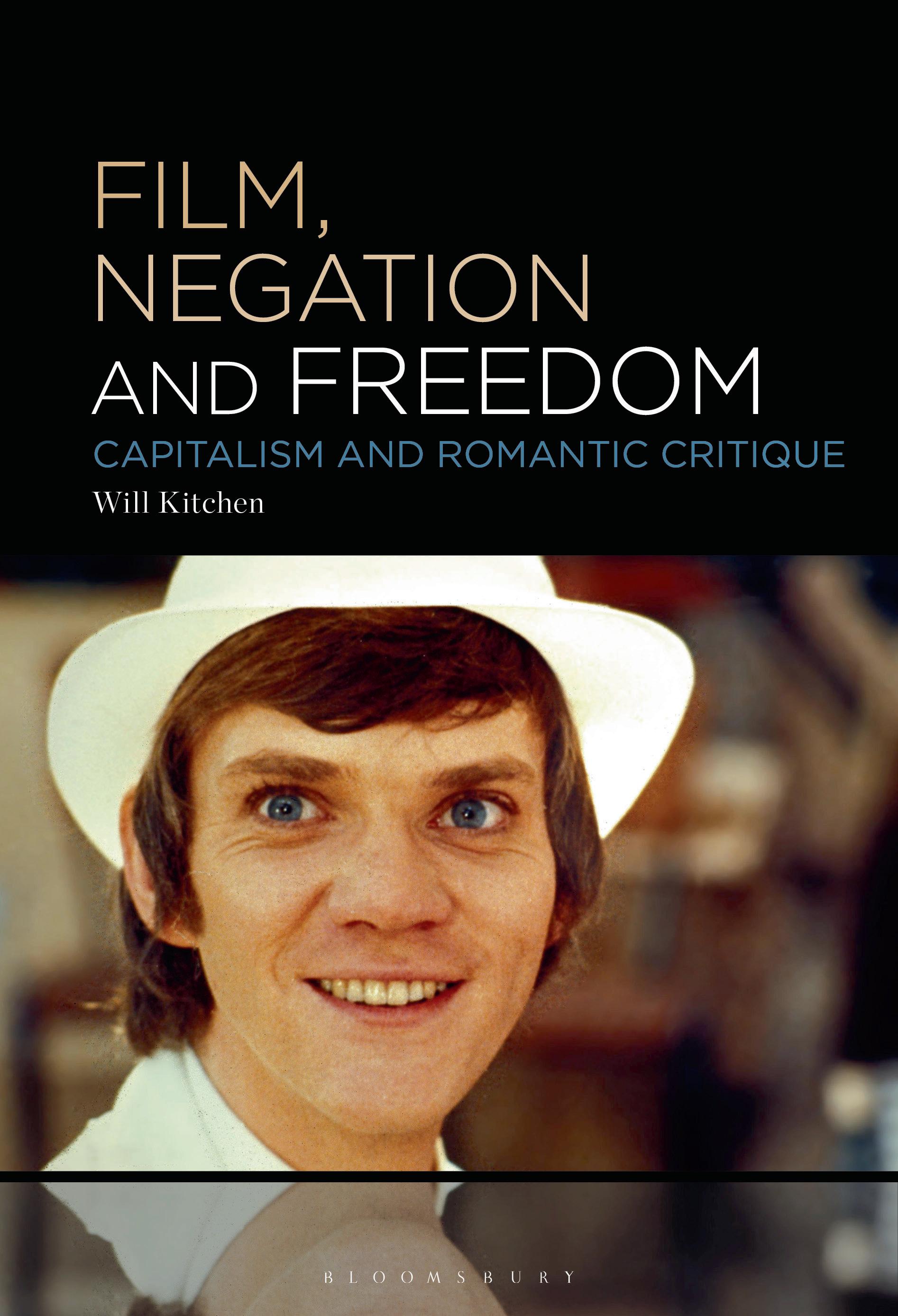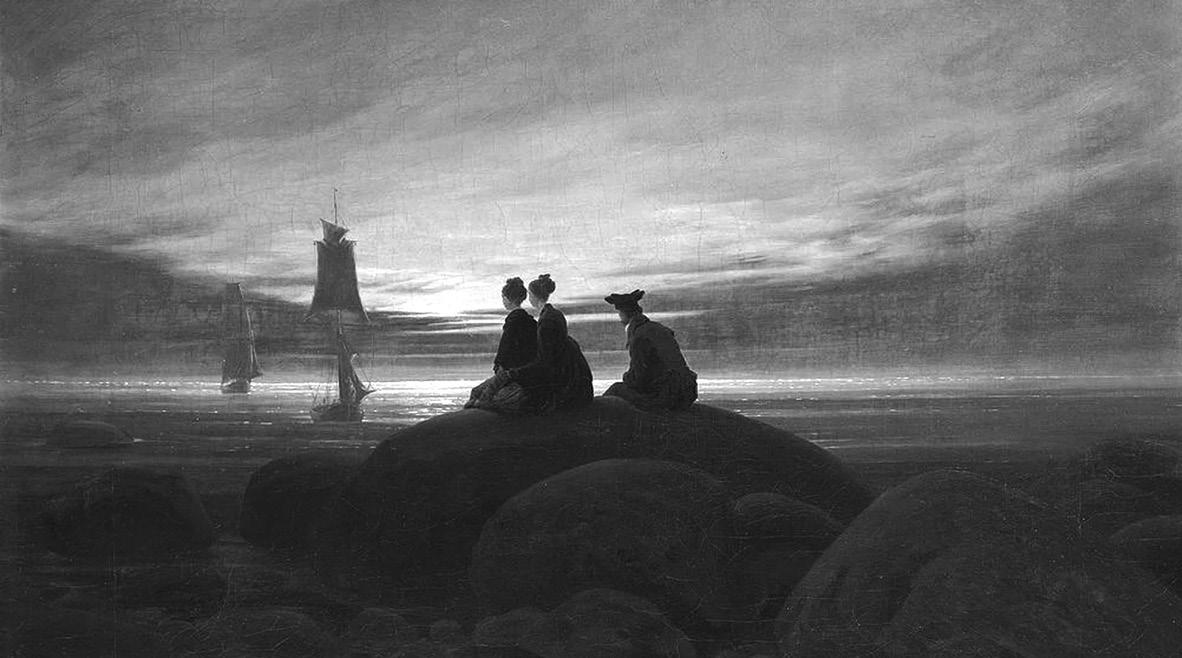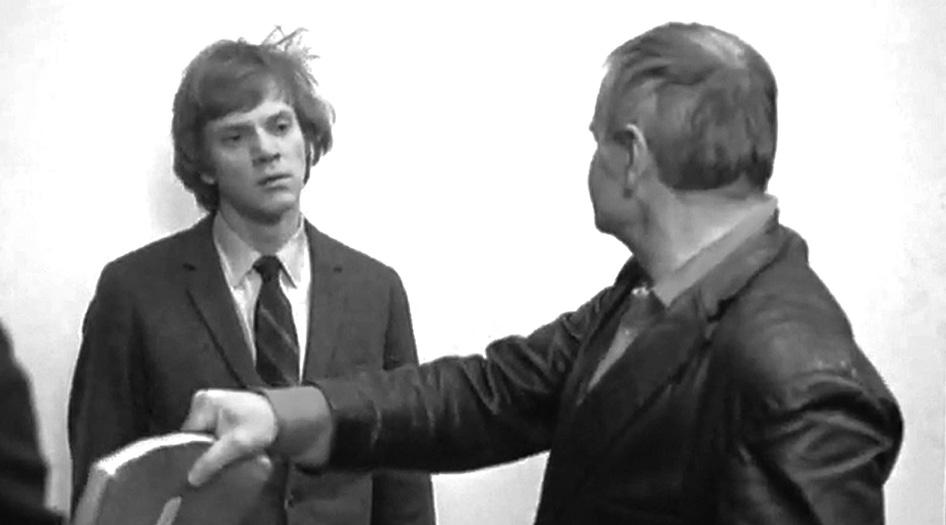Introduction
Carl Schmitt’s Political Romanticism (1919) contains the following accusation:
Adam Müller . . . succumbed to the influence of heterogeneous impressions. . . . He always had looked for the nature of things in a sphere different from the one to which they belonged, and thus he shifted from one domain to another. . . . Having surrendered to the impression of the most immediate reality . . .
[Romantics such as he] clothe affect with philosophical and scientific raiments and words rich in associations, collecting the material for this from the literature of the entire world, from all peoples, ages, and cultures. In consequence, the momentary impression of an enormous richness results. Entire worlds seem to be conquered.1
Perhaps Schmitt is right. And perhaps his accusations apply to film, and Film Studies, as well. Historically, film has been able to profit from its multimedia inheritance and pro-filmic brigandry by proclaiming that these features form part of its artistic significance. But if the Romantic artist, critic or film really does treat the object of their impressions not as a thing existing ‘for itself’, but, rather, as the indifferent occasio for their own individual world-creation, as Schmitt claims, then perhaps every instance of scholarly appropriation might be contaminated by the ravenous egoism of the ‘Romantic spirit’. Maybe this very capacity for bloating – a voracious absorption of all that comes across its path – is a sign that Romanticism must be consigned to the scholarly ash heap, or rejected as a thoroughly unhelpful explanatory tool, as Karl Popper demanded of all irrefutable theories.2 Yet, to borrow a metaphor from Isiah Berlin, the scholarly field of Romanticism is a ‘wild wood’;3 who knows what strange and surprising things we might encounter along the way? Romanticism’s scandalous affinity with inappropriate relations, paradox, inconsistency and dilettantism is perhaps a bad example for academic practice. But through all the confusion, it
1 Carl Schmitt, Political Romanticism, 1919 (Brunswick and London: Transaction Publishers, 2011), 90, 107.
2 See Karl Popper, The Logic of Scientific Discovery, 1935 (London and New York: Routledge, 2002), 17–20.
3 Isiah Berlin, The Roots of Romanticism, 1965, ed. Henry Hardy (London: Pimlico, 2000), 100.
does impart one very valuable lesson. It asks us to question the nature of truth itself, our own desire to grasp it and how we go about our search.
It is a matter of explanation. Who is to say what belongs to one domain rather than another? For better or worse, Romanticism questions the very prescriptivism that is implicit in Schmitt’s remark: the authoritarian desire to order schematic constructs and relations in terms of judgements of appropriateness and their realization in language. The kind of ‘dilettante’ and indecisive Romanticism criticized by Schmitt gains a positive moral value when we attempt to understand it in relation to its opposite: absolute decisions, glorification of action in the abstract, positivist epistemologies and those certain distinctions between ‘friend’ and ‘foe’ that led Carl Schmitt himself – critic of Romanticism and member of the Nazi Party – into the irrational world of fascism, the apotheosis of Romanticism’s darker imperatives.4 The contemporary relevance of this concept stems from its oldest clichés: paradox and contradiction, shock and excess and the questioning of norms and traditions, which inevitably follows such discontinuity. Proceeding by fits and starts, contemporary critical discourse is capable of recognizing the survival and pertinence of Romanticism in the world today, as well as the special relationship it shares with audiovisual media. Jacques Rancière has recently shown how film inherited the dream of the Blue Flower (Blaue Blume), becoming the art that most fully strives for a New Mythology capable of emancipating humanity from social inequality, assembled from scraps wrenched not only from the culture of the past but also from the naked surface of the world. Building upon such premises, this book offers a fresh perspective from which to examine this Romantic matrix – one that raises and connects some of the most important questions in aesthetics, politics and philosophy.
The aspect of Romanticism I want to address is complex and somewhat idiosyncratic. In a sense, it is a philosophy of action inscribed in the difference between two conceptual poles – a Dark pole and a Light pole – which might be profitably understood in reference to a contrast between ‘cinema’ and ‘film’.5 Rhetorically speaking, cinema’s Romanticism is rooted in action. It includes those dynamic heroic figures who decisively embark upon great adventures; fascinating stories invested with unity, rhetoric and engaging style; dramatic narratives of conquering willpower, striving for communal or individual totality.
4 For an informative critique of Carl Schmitt’s philosophy and his relation to National Socialism, see Georg Lukács, The Destruction of Reason, 1954 (Delhi: Aakar Books, 2017), 652–61, 840–52.
5 A table of comparative terms is provided in the Appendix. It charts some useful relationships and distinctions that may aid the reader in following my broadly dualistic interpretation of Romanticism, film and other concepts.
Film’s Romanticism, however, lies in action’s negation. It is found in those moments that interrupt the story; in the character who doesn’t know what to do next; in the excess which reminds the viewer that they are experiencing a fiction. If ‘cinema’, understood in such terms, is the primary active guarantor of entertainment and economic capital, then the resistance created by ‘film’ marks an oppositional aesthetic truth-content. We will see later how this distinction also broadly corresponds to aspects of Rancière’s theory of the ‘regimes of art’.
As I understand it, a more nuanced understanding of film’s Romanticism derives from these dual powers – Dark and Light – which are enabled by the poetics of modern art itself.
The theoretical chapters in Part One of this book will explain how the Dark Romanticism of ‘cinema’ finds its progenitor in Fichte’s The Vocation of Man (1799), which, like the Hollywood director, calls for ‘action’ before all else. It also shares this dynamism with the capitalist entrepreneur who masterfully chases the standard of quantity in profit margins, and the Nazi propagandist who imposes their will over non-Aryan races with undaunted conviction. The Light Romanticism of faltering ‘film’, however, will find expression in the artist who suffers impotence in their effort to produce the perfect work, the daydreamer torn between two competing thoughts and the immobile figures in the paintings of C. D. Friedrich who appear fixated by remote and sublime spectacles (Figure 1).
Obviously, such an interpretation of Romanticism requires a great deal of explanation, and this can best be accomplished by developing the argument
Figure 1 Immobile figures in Mondaufgang am Meer (Moonrise Over the Sea, 1822) by C. D. Friedrich. Reproduced by permission, Alte Nationalgalerie, Berlin.
throughout this book. Yet, the opposition of stillness and movement underlying the basic schema is, needless to say, somewhat familiar territory for Film Studies. Figures such as Deleuze and Bazin have long valorized immobile moments in film as emblems of an oppositional aesthetic set defiantly against that capitalistic ideology epitomized by the Hollywood dream factory. The Romantic approach opened by the work of Rancière, however, gives us opportunity to explore a new path and a new selection of subjects, and allows these debates to be broadened and enriched. For reasons that will become clear, this kind of filmic inactivity will not be sought in the work of Ozu or De Sica, but, rather, in films directed by those curious ‘Romantic’ artists, Arthur Penn and Lindsay Anderson. The historical overview of Romanticism that I provide before the filmic case study analyses in Part Two will explain why the idea of ‘critique’, and, more particularly, the critique of capitalism as a socio-economic and cultural development, is so vital to this approach. The films of Penn and Anderson – which often display a highly critical attitude towards ideas associated with capitalism and its values of economic rationality, individual agency and proactive morality – make suggestive use of a certain passivity that, I will argue, is more richly understood in reference to Romantic critical philosophy.
To jump ahead, it is worth emphasizing that this argument rests upon the belief that positive moral value is attached, or should be attached, to the idea of negation: the rejection of totality in all its forms. The guiding conviction is the idea that morality and freedom demand, not affirmation, positivity and the highest Good, but, rather, the affective revelation (not the resolution) of incoherence, falsity and suffering in our experience of both art and the world around us, even to the point of self-negation.
This approach to Romanticism will involve us in some surprisingly familiar debates. In the last thirty years, it has been relatively common to find connections drawn between Romanticism and more contemporary theoretical developments such as postmodernism, post-structuralism and deconstruction – those various ‘isms’ and their critico-ethico-rational problematics, which Richard J. Bernstein grouped together as the ‘new constellation’, populated by figures such as Foucault, Rorty, Derrida and Habermas.6 That fascination with rupture, Otherness, anti-foundationalism and plurality which characterizes much twentieth- century-philosophical thinking – themes that Bernstein calls
6 Richard J. Bernstein, The New Constellation: The Ethical-Political Horizons of Modernity/ Postmodernity (Cambridge: Polity Press, 1991), 50.
‘central in our time’7 – possesses a decidedly Romantic quality. In many of its forms, the goal of this ‘critical philosophy’ is negation: the fight against totality, the disclosure of reification, the demythologization of entrenched ideologies, what Morse Peckham called ‘cultural transcendence’, and even what I have called elsewhere the conjectural presentation of erased explanans.8 This is what a certain kind of Romanticism has always done: the disenfranchisement of language which creates meaning and order through distinction and identity. Yet, this critical Romanticism also has a doppelgänger which endeavours to enthrone such a language. Where one undertakes the critique of totality, its Dark half strives to bring it about. It is the former’s task to reveal the latter’s violence, just as film’s aesthetic moments of stillness negate the dynamic life of cinema. Following Rancière, I contend that this Janus-faced Romanticism is not only a method of enriching political interpretations of cinematic content, but also something rooted in the poetics of film itself.
Romanticism and film: Rancière’s regimes of art and audiovisual explanation
Romanticism and film are difficult yet richly rewarding things to examine. They are domains of sensory and political significance that transcend all attempts at verbal reduction. Both concepts pull in opposing directions: towards total indeterminate fragmentation through the very logic of their form, and yet, due to the gravity of categorization, these fragments simultaneously fall together into the confounding idea of an intrinsic and totalizing ‘essence’. In other words, ‘Romanticism’ and ‘film’ are both things; but they are things that bear the ineradicable scar of never being one thing in particular. Recent history has shown how both Romantic Studies and Film Studies are undergoing a crisis of identity, struggling to draw boundaries around subjects that have traditionally accommodated an impetuous desire to do away with boundaries altogether. Romanticism and film share an oscillating ontology of presence and absence: darkness and light, the shot and the cut, sacred and profane, the sign and the
7 Ibid., 57.
8 ‘Explanans’ being, as I like to use the term, those interpreted secondary aspects of an explanation that it is necessary to take for granted in order to render that explanation intelligible and relevant to any given situation; see Will Kitchen, Romanticism and Film: Franz Liszt and Audio-Visual Explanation (London and New York: Bloomsbury Academic, 2020), 9. On Peckham and ‘cultural transcendence’, see note 31.
signified, the correct and the incorrect. Film theory through Eisenstein, Bazin, Metz and Deleuze has been aware of this slippage of categories, but its Romantic aspects did not fully emerge until the recent work of Jacques Rancière. Before we proceed, therefore, it is worth restating this historical and theoretical context, much of which was also outlined in my previous book Romanticism and Film: Franz Liszt and Audio-Visual Explanation (2020).9
Film is not one medium – one art form – and does not articulate the same set of essential properties across all of its products. Neither is this non-essentialism enough to distinguish it from other media in the modern era. Novels and symphonies participate in the same sense of distraction – the same wandering between correct ways of doing things, which define the products of what Rancière calls ‘the aesthetic regime of art’.10 Romanticism, in part, means exactly this multimedia imperative: boundaryless-ness in the face of an emancipated autonomy of artistic production. Modern, postmodern, avant-garde and Romantic art all mean the same thing, in these terms: a critical discipline of production and reception that questions the appropriateness of categorical pronouncements.
The theoretical ground opened by Rancière’s work on ‘regimes of art’ (to be explained in greater detail in what follows) broadly accommodates other critiques of postmodernist thought, including the work of Morse Peckham, Alex Callinicos, Nikolas Kompridis and others. These theorists broadly refute the idea of a qualitative break at the dawn of the ‘postmodern’ era, and find the experiences, ideas and approaches supposedly characteristic of this postmodern world already emergent within ‘the long nineteenth century’. Romantics like Novalis, Liszt and Wagner advocated the mixing of the arts, thinking that combined aesthetic effects provided greater philosophical insights into the higher regions of truth.11 In his writings on art, Schelling describes this formal emancipation in a particularly filmic register: ‘Contrasts and mixtures of subject matter are painted that are necessary in the romantic poem – and one can say in the strictest sense that they are painted, since everything in him is living colour, a moving impetuous painting in which the outlines sometimes disappear
9 The introduction and opening chapters of Romanticism and Film also contain reflections on methods of textual interpretation that might help to frame the case study analyses presented later in this book.
10 Jacques Rancière, The Politics of Aesthetics, 2000, ed. Gabriel Rockhill (London: Bloomsbury, 2017), 15–25.
11 See Novalis, Logological Fragments I, c1798, in Philosophical Writings, ed. Margaret Mahony Stoljar, 47–66 (Albany: State University of New York, 1997), § 50, 58; see Kitchen, Romanticism and Film, 56.
entirely, sometimes emerge in stark emphasis.’12 Rancière saw this ‘impetuous painting’ and named it the progenitor of film, whilst placing particular emphasis on the impetuosity. The stark disappearances and emergences of ‘modern’ art (i.e., art created during the period of modernity following the development of the broadly Romantic ‘aesthetic regime’) allegorize the vagaries of political representation itself. Emancipation from artistic form also carries with it the possible emancipation of society, for reasons that occupy the history of postKantian aesthetics. After Beethoven, Friedrich and Paganini, art is no longer bound by rules of appropriateness, and these rules, as critical philosophical aesthetics would later re-emphasize, are the accusatory ghost of doxa. It is for this reason that Romanticism has remained a potent and illuminating explanatory tool for cultural commentators who seek to understand the mutual dynamics of art and social critique.
A very important cultural ideal was born towards the end of the eighteenth century: faith in art as the one force capable of healing a dirempted modern subject. Western civilization was being traumatized by the chaotic revolutions and alarming philosophies that sprang from the Enlightenment, and it was hoped that art would become the new religion to save a humanity that was quickly losing faith in the metaphysical certainties, values and other organizing structures provided by religion, monarchy and positivist empirical rationalism. Art must strive to unite the ‘subjective’ and ‘objective’ – and, by extension, reason and nature, individual and society – which Kant’s Transcendental Idealism and the murderous ‘Terror’ of the French Revolution had helped to split apart. The aesthetic regime, or the ‘Romantic’ idea, begins at this historical moment. It was the birth of the modern meaning of the word ‘art’ as something much more than τέχνη (technē), and as something more akin to ἔρως (éros) or δαίμων (daímōn) – some sublime apparition that promises to reveal a kind of truth beyond the power of language. It encourages the creative spirit to strive for the ‘Absolute’, or some perpetually deferred ideal. Fascinated by a respect for a mysterious objective reality, the new art often credited insignificant objects with their own power of muted speech. These turbulent circumstances marked the ascendency of the aesthetic regime in art.
The development of this new regime is usefully understood to be synonymous with what Adorno identifies in Aesthetic Theory (1970) as the moment of art’s
12 Friedrich Wilhelm Joseph Schelling, The Philosophy of Art, 1802–1803 (Minneapolis: University of Minnesota Press, 1989), 228.
‘spiritualization’ – its appropriation of the features characteristic of Kant’s natural sublime, or the development of autonomous expressivity over the principle of mimesis.13 Through the presentation of its own objectivity, the modern artwork makes the poignant declaration: “if only” – one that is untranslatable into ordinary language.14 The utopian desire inherent to this claim is always thwarted by the constructed, historical, empirical and therefore bounded, nature of the work itself. Every artwork has its conservative aspect, not only, as Adorno suggests, in its fated contribution to the economic system of production, distribution and the compartmentalization of the social totality into separate and reciprocal domains of work and leisure, but also in what we will see described as the Rancièrian ‘dialectic’ of regimes: ‘aesthetic’ and ‘representative’.15 This is the dynamic I have taken the liberty of conscripting into the schema of Light and Dark Romanticism. We will see its form already present in Schiller’s Letters on the Aesthetic Education of Man (1795) and Schelling’s System of Transcendental Idealism (1800). It synthesizes Light and Dark by articulating free aesthetic cognition as a product of contextualizing explanation by an artist. Although this new meaning given to the idea of ‘art’ followed from the Age of Revolution, its effects are alive and well today, being inherent to the form of cinema as well as audiovisual media in general. Figures such as Beethoven, Flaubert, Wagner, Barnum and Méliès have all played their role, passed the torch and helped to shape a world of modern aesthetics, which is explicable according to innumerable conflicts between ideas of art and entertainment, individual and society, explanation and freedom. What makes film particularly special, according to Rancière, is the unprecedented extent to which its aesthetic and technological functioning exemplifies this Romantic poetics. In Film Fables (2001), he suggests that the camera’s disinterested mechanical reproduction of a genuine objective world is married to, and perpetually thwarted by, the filmmaker’s interested selection and arrangement of captured images into a subjective and ideologically determined expression. It is in this way that film becomes the perfect embodiment of that perpetual Romantic striving after the ‘Absolute’ – that great promise and hope which was left hanging over the final pages of Schelling’s System of Transcendental Idealism. 16
13 Theodor W. Adorno, Aesthetic Theory, 1970 (London and New York: Bloomsbury, 2017), 99–106.
14 Ibid., 145.
15 Ibid., 319.
16 Jacques Rancière, Film Fables, 2001 (London and New York: Bloomsbury, 2016), 9; Friedrich Wilhelm Joseph Schelling, System of Transcendental Idealism, 1800 (Charlottesville: The University Press of Virginia, 2001), 219–36. It is perhaps interesting to note, considering the presence of
Rancière was right to suggest that film echoes Novalis’ pronouncement that ‘everything speaks’:
Everything we experience is a communication. Thus the world is indeed a communication – a revelation of the spirit. The age has passed when the spirit of God could be understood. The meaning of the world is lost. We have stopped at the letter. As a result of the appearance we have lost that which is appearing.17
It is important to recognize the sense of loss in Novalis’ words, for it helps to reveal the specific truth that is sought through Rancière’s own comparison. The sadness or poignancy that results from Novalis’ elegiac pronouncement of a fallen world echoes Roland Barthes’ notion of the photographic ‘punctum’18 – a wounding testimony from the borderland of presence and absence. Like Novalis, Rancière and Barthes, Adorno also accentuates such painful fragments, seeing them to bear an ill-defined ‘truth’ that forcefully negates the ideology of social totality: ‘Artworks become eloquent with wordless gesture . . . they reveal themselves as the wounds of society . . . the socially critical zones of artworks are those where it hurts; where in their expression, historically determined, the untruth of the social situation comes to light.’19
As a pivotal phenomenon in the history of modern art, film exemplifies this development of aesthetic ‘self-consciousness’. The unbiased objectivity of the camera, as Rancière puts it, records things in the world ‘as they come into being, in a state of waves and vibrations, before they can be qualified as intelligible objects’.20 Our attention is guided by the camera, capturing the immediate and autonomous presence of pro-filmic reality which is simultaneously conscripted into a tailored fiction. After assigning such elements a functional role, often dependent upon the logic of cause and effect – an ‘explanation’ for their inclusion – the artistic work then leaves them to their own expression of being. Typically, texts will oscillate between these poles of gravitation when a narrative is interrupted, and the film is distracted from its broader function of telling stories – stringing along plots with the assistance of images and sounds which
Adorno in the following chapters, that Rancière’s conviction after Schelling also echoes a fragment of Adorno’s Aesthetic Theory in which the dialectic function of cinematic montage displays a perfect oscillation between the intentioned construction of editing and the pure mechanical capturing of unintentioned reality of the shot; Adorno, Aesthetic Theory, 211.
17 Novalis, Logological Fragments II, c1798, in Philosophical Writings, ed. Margaret Mahony Stoljar, 67–84 (Albany: State University of New York, 1997), 54, 81.
18 Roland Barthes, Camera Lucida, 1980 (London: Vintage Books, 2000), 25–7.
19 Adorno, Aesthetic Theory, 323.
20 Rancière, Film Fables, 2.
invite attention to fly past what the camera is uniquely gifted with the ability to dwell upon. The interrupting image retains something of the power of the punctum, which it uses to expose a haunting presence of pro-filmic autonomy – an arrangement of sensory experience that refuses the act of explanation in becoming part of an artistic product. This is the distinction between what Rancière calls the ‘aesthetic’ and ‘representative’ regimes.21 Read the other way, the objectivity of ‘film’ is curtailed by its constant and institutionally determined need to become ‘cinema’.
Armed with the power to fulfil the Romantic dream of aesthetic autonomy, film returns ever again to the logic of the representative regime through the act of telling stories. It arranges fragments of a world standing for itself (puncta) into sequences containing intelligible actions, explanations, networks of causes and effects (stadia).22 As Adorno puts it, ‘the process of artistic production is precisely that of according importance to something’ as things worth seeing, things which mean something, or demand certain responses, whereas Kantian disinterestedness would have artistic experience reject all such demands.23 For
21 Jacques Rancière, The Intervals of Cinema (London and New York: Verso, 2014), 37.
22 Rancière’s approach to film seems in many respects to echo that of Jean-François Lyotard, particularly with regard to the conceptualization of both politics and aesthetics as a process of mise-en-scène –save with a pertinent addition in Rancière of the Romantic idea. In ‘Acinemas’ (1973), and other works, Lyotard also describes a process of partially authored directions and orderings at work in the audiovisual text which spill over into the ‘real’ world of spectatorship, defining the norms and responses; see Jean-François Lyotard, Acinemas: Lyotard’s Philosophy of Film, ed. Graham Jones and Ashley Woodward (Edinburgh: Edinburgh University Press, 2017), 38–9. The ‘subjective’ dimension of the cinematic product suggested by Rancière is comparable to Lyotard’s idea of the ‘exclusion of movements’; Lyotard, Acinemas, 33; the authored film presents a series of excisions which curtail the presence of freedom through the conventions of representational form, against which ‘the idea of a sovereign film’ stands as a regulative opposite of free and unauthored representation; Lyotard, Acinemas, 65–9. For Lyotard, film is to be understood in reference to a tension between two poles: ‘immobility and excessive movement’; the inherently transgressive aura of the aesthetic domain, as a non-functional play of movements (lights, colours, sounds) existing ‘for themselves’, meets the need for such movements to be ordered, limited, cut off and arranged into forms, narratives and commodities; Lyotard, Acinemas, 35. Despite Lyotard’s problematic tone of ideological absolutism – recalling the ‘ideal reader’ fallacy that dogged contemporary Screen Theory – this description of mise-en-scène as a ‘general process touching all fields of activity’, when purged of this tone, is very much in tune with Rancière’s aesthetic-political sensibilities; Lyotard, Acinemas, 38. If we are to curb the political pessimism of Lyotard’s idea – that the ‘exclusion of movements’ ‘eliminates all impulsional movement, real or unreal, which will not lend itself to reduplication, all movement which would escape identification, recognition and the mnesic fixation’ – with the Rancièrian idea that Romantic aesthetic indeterminacy always renders such orderings non-conceptual and nonbinding, then we are quite close to the idea that I outlined in Romanticism and Film: of film as audiovisual explanation – as an imposition upon making sense, pulled out of shape by sovereign moments of limited autonomy, a movement that contains no immanence of success; Lyotard, Acinemas, 38; italics added.
23 Adorno, Aesthetic Theory, 205.
all its promises of freedom, Romanticism’s poetic schema never escapes the shameful shadow of violence in the form of the artist’s explanation as expression.24
We can summarize Rancière’s film theory with the following schema. The subjective expression of the filmmaker is wedded to the supposedly objective revelation of the camera, and the aesthetic object thus produced is caught between two Romantic tendencies, Dark and Light, dialectically realizing an aporetic condition:
1. The expression of the filmmaker presents ‘cinema’: stories, logic, order and ideology. It obeys the Dark Apollonian drive, as opposed to the Dionysian; enacts the placement of things in front of a camera as an intrinsic valuation of them as ‘things worth seeing’. In this way, cinema presents us with explanations – interpersonal impositions upon making sense.25 It actualizes an ostensibly ‘real’ world through a frame that includes and excludes; its content results from choices made by interested individuals. This, in Rancière’s terms, marks its commitment to the representative regime of art: the arrangement of sensory elements as a rational and meaningful ‘action’, framed for consumption, and fit to be assigned a functional economic role. This effect, akin to Barthes’ stadium, is cinema’s explanatory tendency, based on interpersonal power relations: the Dark, subjective Romanticism of ‘cinema’.
2. ‘Film’, on the other hand, thrives in the immediate presentation of an honest and free pro-filmic reality: an objectivity whose discontinuities and particularities refuse to be assimilated into the grand representation of the cinematic ‘text’. It marks the alluring disorder of things that ‘do not fit’ – the Light Dionysian, as opposed to the Apollonian, drive. This experience of autonomy stands-in for Barthes’ punctum: that which ‘stings’ because it is invested with its own incomprehensible power of speech, as Novalis wrote, and resists the pull of meaning. This is film’s tendency towards freedom, based upon aesthetic disinterestedness: the Light, ‘objective’ Romanticism of ‘film’.
These antithetical forces create a perpetual movement of political possibility. Moments free from functionality (2) are drawn back in (1). The world becomes
24 The whole issue is encapsulated in the problematic statement made in the ‘Oldest Program for a System of German Idealism’ (c1795): ‘Posey . . . becomes again what it was in the beginning – the educator of humanity’; Friedrich Hölderlin, (et al.), ‘The Oldest Program for a System of German Idealism’, c1795, in Essays and Letters, 341–2 (London: Penguin, 2009), 342.
25 See Kitchen, Romanticism and Film, 7–14.
explained, but only by slippery and ambiguous means. This dialectical movement captures the richer application of terms such as ‘the aesthetic regime’ and ‘audiovisual explanation’, as continual processes of self-critiquing dependency. This is the place of the modern ‘artwork’: between indeterminacy (‘art’) and commitment (‘work’) – between Light and Dark.
Rancière’s film theory emphasizes the political aspects of this dualistic Romanticism. The dialectic of regimes also operates between cinema’s social function as ‘mere’ entertainment, and film’s potential to foster genuine political change. Like many philosophers in the critical tradition, Rancière finds the political power of film to lie in its ability to bring about a kind of Schillerian ‘aesthetic education’, in allowing the mute speech of filmic representations –‘the splendour of the significant’ or ‘the wisdom of the surface’ brought out by the aesthetic regime – to help us ‘see things from another angle’.26 The idea of freedom, which underlies this concept, is the capacity of the text’s meaning to overstep the intentions of production. The audiovisual explanations of cinema can be received in multiple ways, and every attempt to translate their meanings is only ever an interpretation in terms of what I have called ‘risky archeological analysis’.27 Thanks to the ‘objective’ nature of the film camera (and it is, of course, merely a rhetorical gesture to state that the mechanical apparatus of film is ‘objective’ – it remains a process of representation, whether the method of light transference and indexing be chemical, digital or otherwise), cinema’s Romantic dialectic is more developed than in other forms of media, and therefore more likely to foster the creation of new and interesting explanations of the world its texts claim to represent.
From Lumière to Netflix, the process of building narratives from audiovisual elements restages that eternal Romantic striving to unify the objective revelation of an autonomous pro-filmic reality and the subjective expression of the filmmaker. Individual texts can play with the limits of explanation, radicalizing the unstable ground between statements of moral normativity and the unmediated ground of individual response. We will see an illustrative example of where this kind of dynamic can lead in one of the central case studies analysed in this book, when the director of O Lucky Man! (1973), Lindsay Anderson himself, steps into the diegesis and slaps his protagonist with a copy of the script (Figure 2). Whilst the subjectivity, which creates narrative order and meaning, reveals itself
26 Rancière, The Intervals of Cinema, 125.
27 See Kitchen, Romanticism and Film, 14–17.
(1973).
as a coercive force, our Everyman ‘hero’ has a moment of profound revelation, articulated as an explicit refusal to act – a refusal to forfeit a subtle degree of freedom by forming a willing part of the fiction. By radicalizing such moments of stasis, which playfully (or obstinately) resist the pull of totality inherent to artistic expression itself, films can slip between conditional and unconditional, objective and subjective – a slippage which, as critical philosophy demonstrates, can evoke potent political forces.
Rethinking Romantic critique in Film Studies
Working from these theoretical premises, this book offers an attempt to enrich the idea of Romanticism in politico-cultural analysis. In Film Studies, the word ‘Romanticism’ has long been the victim of simplification, often being used to frame a basic Left/Right distinction without much room for complex dialectics. Michael Ryan and Douglas Kellner in Camera Politica (1988), for example, occasionally employ ‘Romantic’ as a decidedly conservative schema corresponding neatly with the general cultural and ideological timbre of latetwentieth-century American Republicanism. Films such as Star Wars (1977) and the Lucas/Spielberg productions of the 1980s certainly position nominally ‘Romantic’ concepts of nature, authenticity, individuality, freedom and irrationality within narratives that can be read to validate Reaganite conservative political agendas, as Ryan and Kellner suggest.28 This limited, but by no means
28 Michael Ryan and Douglas Kellner, Camera Politica: The Politics and Ideology of Contemporary Hollywood Film (Bloomington and Indianapolis: Indiana University Press, 1988), 11.
Figure 2 The artist (Lindsay Anderson) reveals the violence of artistic expression in O Lucky Man!
false, understanding of Romanticism situates the concept as an arch enemy of all film analysis inspired by Marx, Adorno, Althusser, Foucault and many a progressive theory of cultural politics. This book seeks to resituate Romanticism in a more ambiguous relation to such approaches.
The hypothesis that every text is fundamentally political29 – or that every instance of language and audiovisual production is an ideological act of explanation – sits at the very core of the current schematization of Romantic philosophy. The accommodation of philosophical notions of negation and freedom into narrative analysis can be more easily grasped in reference to an understanding of Romanticism as something that blends aesthetics and politics, in Rancière’s terms, into a continuum of evaluative sensory and social experience. The essentially antagonistic relation between social classes – described by Fredric Jameson as the ‘langue’ against which the individual text stands as an instance of ‘parole’30 – here becomes one based on a more Romantic conflict (one which has traditionally been invalidated by Marxist notions of critical value) between the individual (the Romantic genius, poet, artist, as well as the capitalist entrepreneur) and the social totality. One of the significant advantages this offers over an approach such as Jameson’s is the devaluation of collective, utopian moments. Rather than positive political ideology, a nominally ‘Romantic’ approach needs to give special consideration to the relational impasse between the individual and the communal totality, the subjective and the objective, and how the traumas and passions of the isolated subject create spaces for what Morse Peckham calls ‘cultural transcendence’: the negation of dominant social values, which have been unmasked as incoherent ideologies.31
This correspondence between ideological criticism and a Romantic approach to film analysis will also lead to a thickening of our theoretical engagements with the texts themselves; for, as already suggested, the idea of Romanticism hitherto employed by political criticism has often cut analysis rather short. For example,
29 As asserted, for example, in Fredric Jameson’s The Political Unconscious, 1981 (London and New York: Routledge, 2002).
30 Jameson, The Political Unconscious, 70.
31 The cultural theorist and philosopher Morse Peckham – who spent his life grappling with ‘Romanticism’ in an attempt to find an explanation that did justice to the far-reaching implications of the concept – coined the term ‘cultural transcendence’ to delineate his field of study. Romanticism implies the presence and negotiation of cultural transcendence; Morse Peckham, Romanticism and Ideology (Hanover and London: Wesleyan University Press, 1995), xiii. Peckham’s explanation of Romanticism seems to accommodate the work of a diverse but not exhaustive range of Romantic schemas, bringing it within the scope of related aspects of critical theory, philosophical hermeneutics and critical rationalism. Elsewhere I have called cultural transcendence Romanticism’s ‘principle of agency’; see Kitchen, Romanticism and Film, 24–7.
like Robin Wood, Ryan and Kellner recognize an aura of Romanticism in the generic hybridity of Arthur Penn’s Bonnie and Clyde (1967), in addition to the text’s valuation of passionate and ‘authentic’ lived experience, expressive camera work, symbolic use of colour and framing, episodic narrative structure and so forth.32 Such pronouncements have often seemed to lead to an inconsequential schematism of themes and formal tropes. In such terms, ‘Romanticism’ provides a mere stepping stone for critics who want to get from thematic and formal elements of films to the real political meat of their analysis, whatever it may be. This reductive approach to Romanticism has often rendered it a mere rhetorical structure in discourse, and robbed it of a richer interpretive potential, such as Rancière’s schema provides.
Political film analysis over the last forty years – such as the work of Wood, Ryan, Kellner, Robert P. Kolker and Robert B. Ray – demonstrates that many texts can be read to value individuality, nature, passion and idealism without this necessary revealing anything decisive about their political or social meaning. The rhetorical malleability of these concepts, their openness to appropriation by (what are interpreted to be) broadly Left-wing and Right-wing narratives, should dissuade us from basing any representational concept of Romanticism upon their presence in any particular film. From this perspective, we will see that it is possible to refute criticisms that target a text’s failure to offer any more ‘positive’ programme for revolutionary praxis. It is somewhat surprising that critics as well versed in critical theory as Ryan and Kellner should wish to see films end with possible ‘images of success’ in order to secure their political progressiveness.33 The negatively valued ‘immaturity’ they detect in Bonnie and Clyde – ‘more Marx brothers than Marx’34 – demonstrates a need for a rejuvenation and deepening of Romanticism as both a political and a philosophical concept.
Yes, both Penn’s and Lindsay Anderson’s films, chosen for special consideration in this book, contain elements that may contradict their political intentions, as Ryan and Kellner interpret them;35 but it is precisely this element of ambiguity or failure – a sense that a film is not in complete control of itself, or that the implied filmmaker is offering an imperfect expression, in which it is less a than straightforward matter to credit the film with meeting its own criteria for success, let alone orient one’s values and sympathies – that is what perhaps
32 Ryan and Kellner, Camera Politica, 21.
33 Ibid., 23.
34 Ibid.
35 Ibid., 26–7.
makes these films more ‘Romantic’ than Midnight Cowboy (1969) or They Shoot Horses, Don’t They? (1969), films that Ryan and Kellner praise for being more holistic, and therefore ‘successful’ in their critique of capitalist society.36
Throughout this book we will return to the seemingly paradoxical idea that ‘failure is success’ – that failure, like suffering, stillness and doubt, is a more valuable political category than success, affirmation or happiness.37 To understand these films we must explore the philosophical and historical roots of the idea that negation – and its various filmic realizations – is on the side of freedom, as a philosophical category. Part One will situate film’s Romanticism within a history of critical philosophy, ranging from Kantian epistemology to Frankfurt School critical theory, after having first understood why the films of Arthur Penn and Lindsay Anderson provide some of the most interesting ways of developing the vital and fascinating questions that arise from this history. The subsequent case study chapters presented in Part Two apply the underlying Romantic schema to selected film texts, and illuminate some of the most interesting, complex and neglected cinematic productions of the twentieth century.
Let us rethink what we mean by Romanticism, then, and allow it to find a new voice in political film analysis. Beyond reductive conceptualizations, exciting new meanings are being found for this concept. Where once cinema was deemed to herald a new era of technological modernism, we are now rediscovering the fact that it was also the culmination of a long Romantic dream. The developing field of ‘film-philosophy’ opened by the work of Cavell, Deleuze and others –one that provides a counterpoint to the theorizing and explicative methods of the naturalistic school of cognitive and behavioural psychology associated with David Bordwell, Noël Carroll, Greg Currie, Murray Smith et al. – has also been called ‘romantic’ by Robert Sinnerbrink.38 There is much to be found by way of similarity between film-philosophy’s willingness to treat film texts as objective progenitors of new and world-disclosing philosophical knowledge on behalf of those who experience them, and the historically Romantic faith in art to bring about the ‘aesthetic education’ of humanity to an elevated moral and political condition. Yet, the tensions inherent to this faith, as Rancière has shown, allow film to meet this goal only halfway, as a thwarted fable.
36 Ibid., 26.
37 The validation of this idea is nowhere more plainly apparent than in Darwinian evolutionary theory or critical rationalism’s evolutionary epistemology; both of these conceptual frameworks can be adequately represented by the schema of ‘trial and error’.
38 Robert Sinnerbrink, New Philosophies of Film: Thinking Images (London and New York: Continuum International Publishing Group, 2011), 2–8.
Part One

